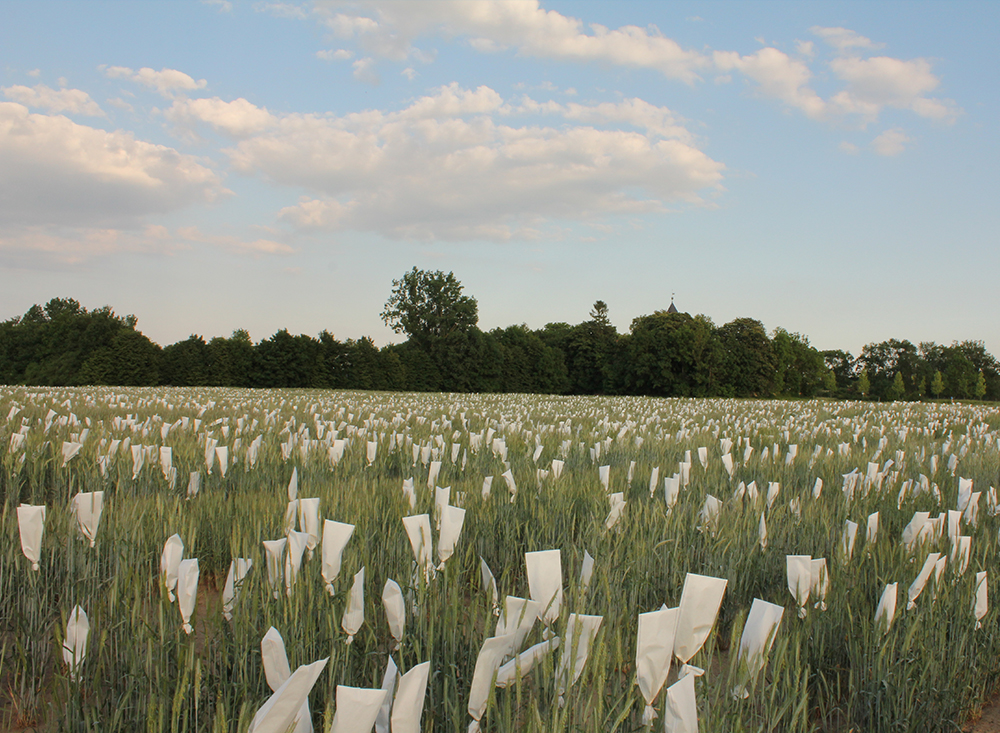
Self-fertility mutations are well known for a long time in rye. The ability to set self seed is highly heritable, and self offspring with high self-set were recovered from outbreeding rye population by the Swedish botanist and geneticist Nils Heribert Nilsson more than 100 years ago. These genetic variants enable the development of inbred lines to capture genetic diversity and are, thus, particularly important for the genetic improvement of rye.
While a reasonable amount of hands are needed for bagging the spikes on-time, these gene variants enable the identification of purebred parental genotypes bearing desired characteristics. However, to come up with the nature of rye, carefully selected inbreds need to be crossed in a final step of a breeding cycle to reconstitute heterozygosity again, which is an indispensable prerequisite to achive the desired performance in a farmers field.
